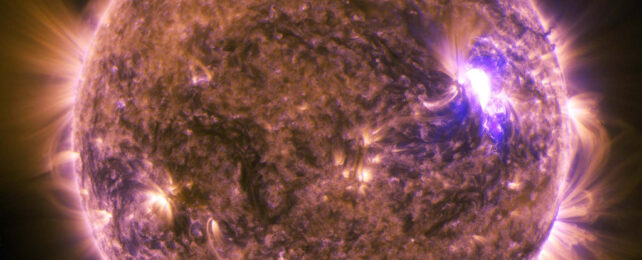This as-told-to essay is based on a conversation with Mathew Owens, a professor of space physics at the University of Reading who researches space science and weather as it relates to solar activity and the solar maximum. It's been edited for length and clarity.
We're close to the next solar maximum, predicted to begin in 2025.
The solar maximum represents a peak in solar activity when the Sun's magnetic field reaches its strongest and most disordered and dynamic point.
This increased solar activity can cause extreme space weather events, including solar flares and eruptions. It can also disrupt radio communications and the power grid and have serious health consequences for astronauts.
The hazards are primarily to large-scale infrastructure. On an individual level, people on Earth are unlikely to directly see the effects of solar maximum.
This solar maximum will likely be stronger than the last one
Solar cycles typically last 11 years, and the solar maximum happens roughly in the middle of each cycle.
The last solar maximum occurred between 2012 and 2014 and was particularly weak – one of the smallest in about 100 years. Consequently, space weather was generally weaker than normal.

This upcoming solar maximum, however, seems like it may return to average values. That means we may see more of an impact on space weather and related potential consequences.
What the solar maximum means for Earth
Solar activity happens in the first place due to the churning motions of plasma inside the Sun, which creates and changes the Sun's magnetic field.
The Sun's magnetic field reaches peak strength during solar maximum, generating an increase in events like solar flares and coronal mass ejections.
Solar flares consist of high-energy photons, like X-rays, that can increase the ionization in Earth's upper atmosphere and disrupt radio communications.

CMEs, on the other hand, are eruptions of solar magnetic field and material that fuel geomagnetic storms. These disturbances to Earth's magnetic field can damage the power distribution grid.
During the solar maximum, we'll also see more bursts of very high-energy particles traveling toward Earth. These bursts are around four times as likely to occur during a solar maximum than a solar minimum.
And, since the particles in these bursts are radiation, they pose a major health risk to astronauts and passengers and crew on high-latitude and high-altitude aircraft. They can also damage space hardware and lead to satellite loss.
You probably won't notice most of these effects
Many effects of the solar maximum are ephemeral, which remains one of the biggest challenges in studying space weather.
For instance, it's often difficult to conclusively link a problem in the power grid to space weather – even if solar activity did cause that problem.
The one concrete effect we can confidently predict is that you'll likely see auroras, aka the Northern and Southern Lights, more frequently at different latitudes.
During the solar maximum, the greater number of solar particles interacting with molecules in Earth's atmosphere causes brighter displays of the auroras that can stretch farther north or south than usual.

Scientists have also found signals of the solar cycle – like changes in temperature and ozone levels – in Earth's stratosphere.
While scientists do include these changes from the Sun when considering long-term climate variations, these effects on the climate aren't as significant or severe as factors like volcanoes, carbon dioxide emissions, and other human activity.
Our reliance on tech raises the stakes
The threat it poses to the power grid poses the biggest concern, not least due to the cascading hazards presented by losing power for an extended period.
It all comes down to probability, though. A stronger solar cycle just means a greater probability of extreme space weather events. It doesn't guarantee extreme space weather.
In fact, extreme space weather can occur even in small solar cycles. During the small solar maximum of cycle 24, a spacecraft far from Earth encountered one of the most energetic CMEs ever seen.
A CME of that scale directed at Earth could have caused serious disruptions to the power distribution grid or major damage to satellite hardware.
This article was originally published by Business Insider.
More from Business Insider: